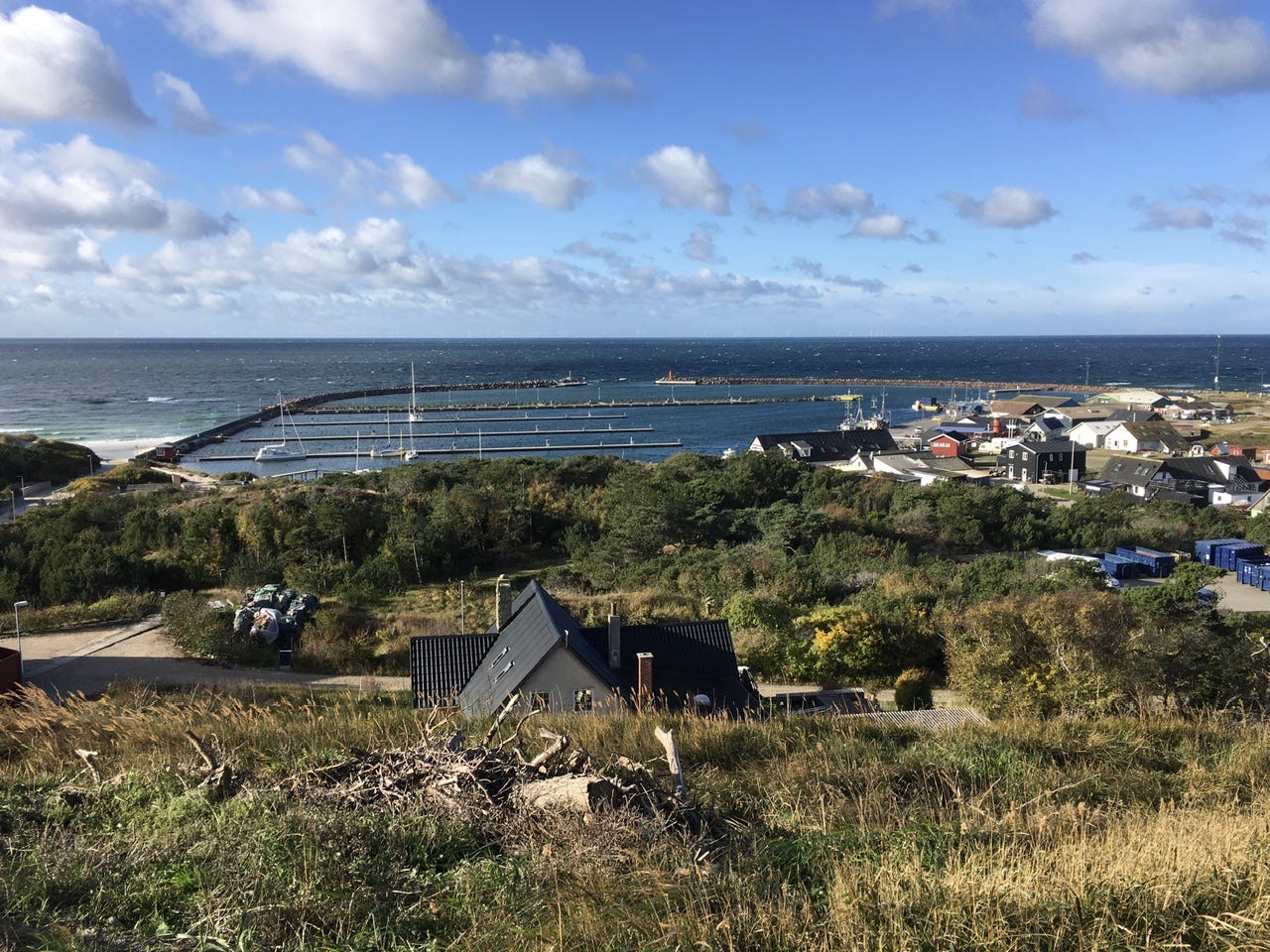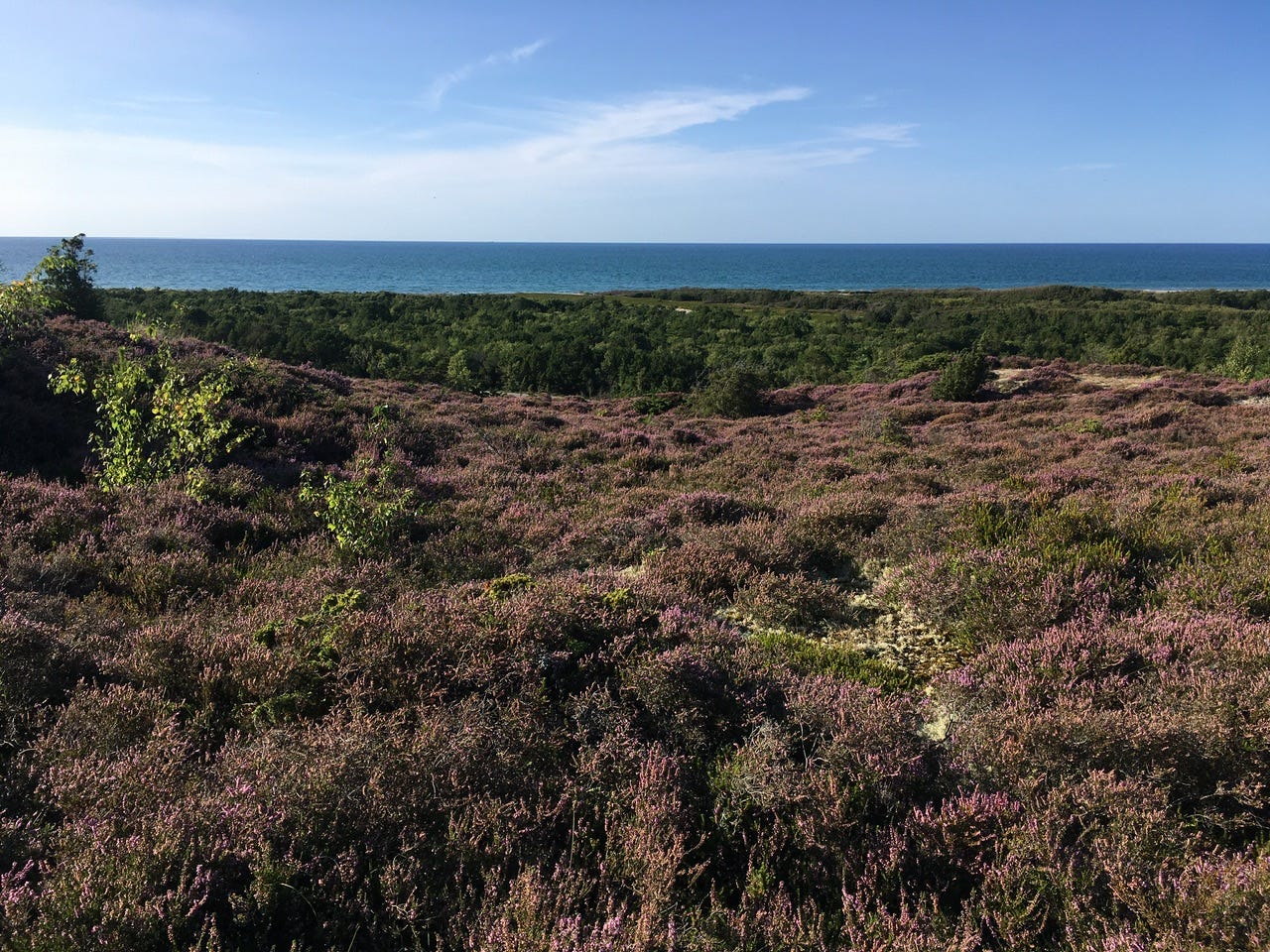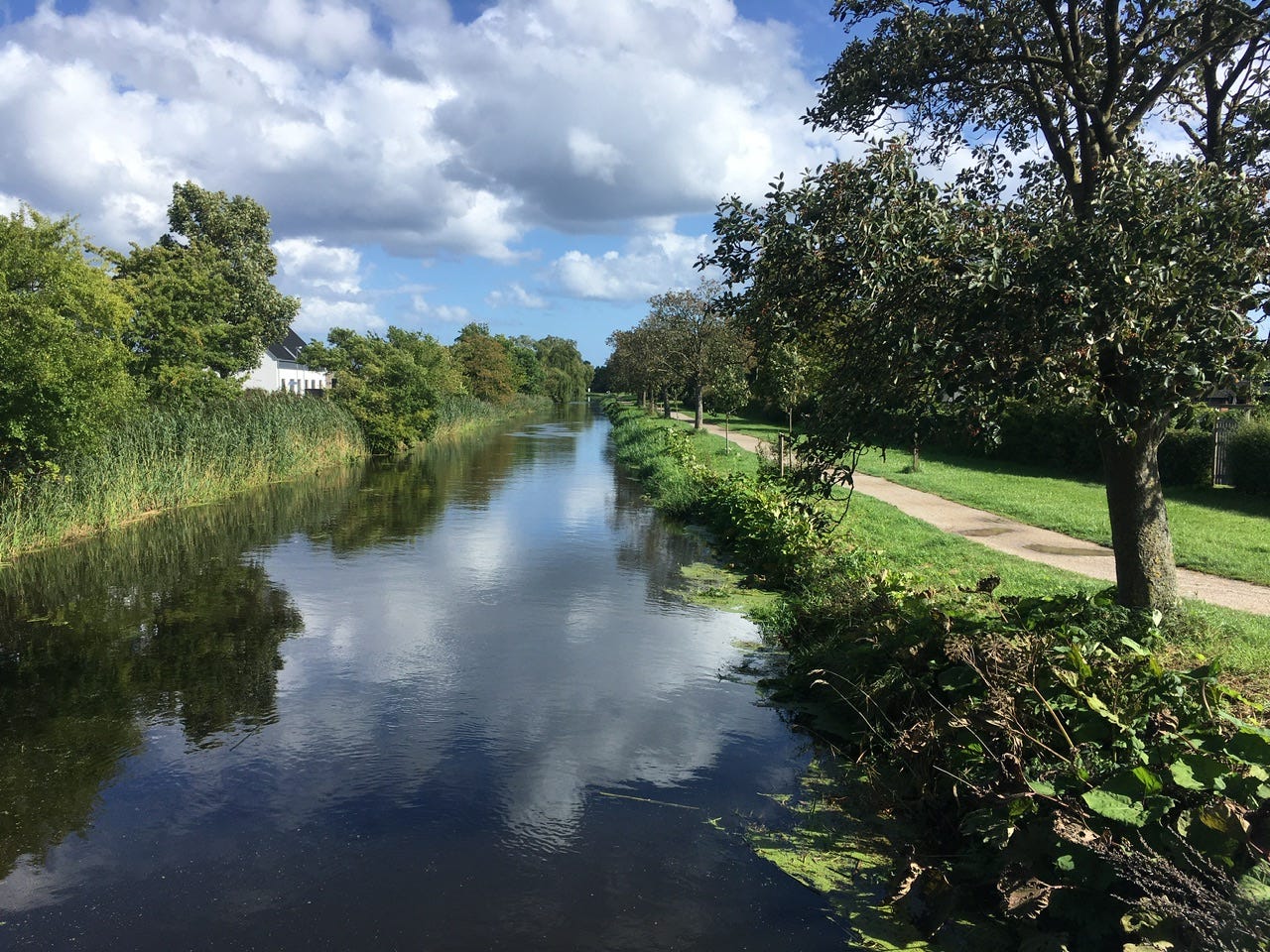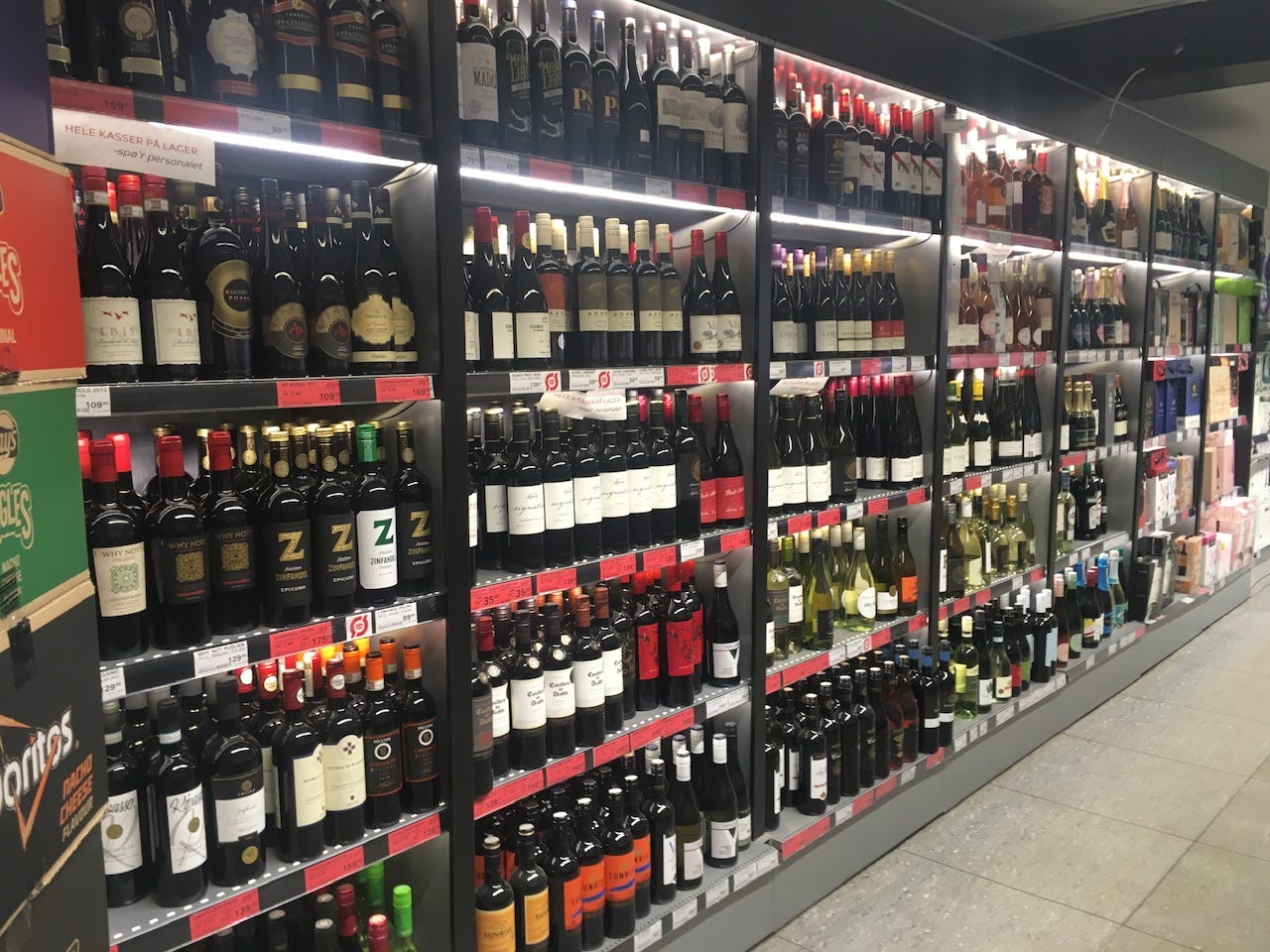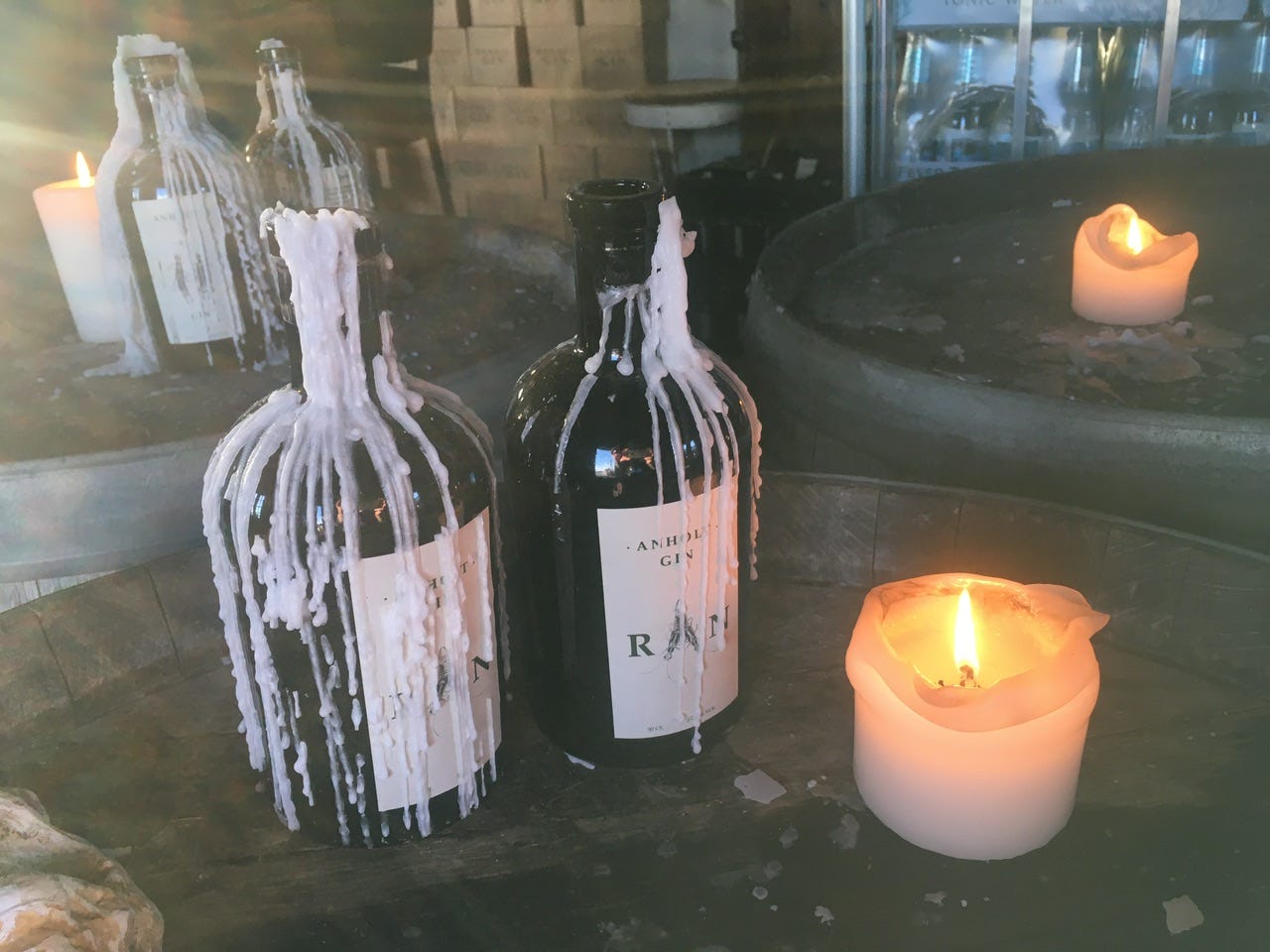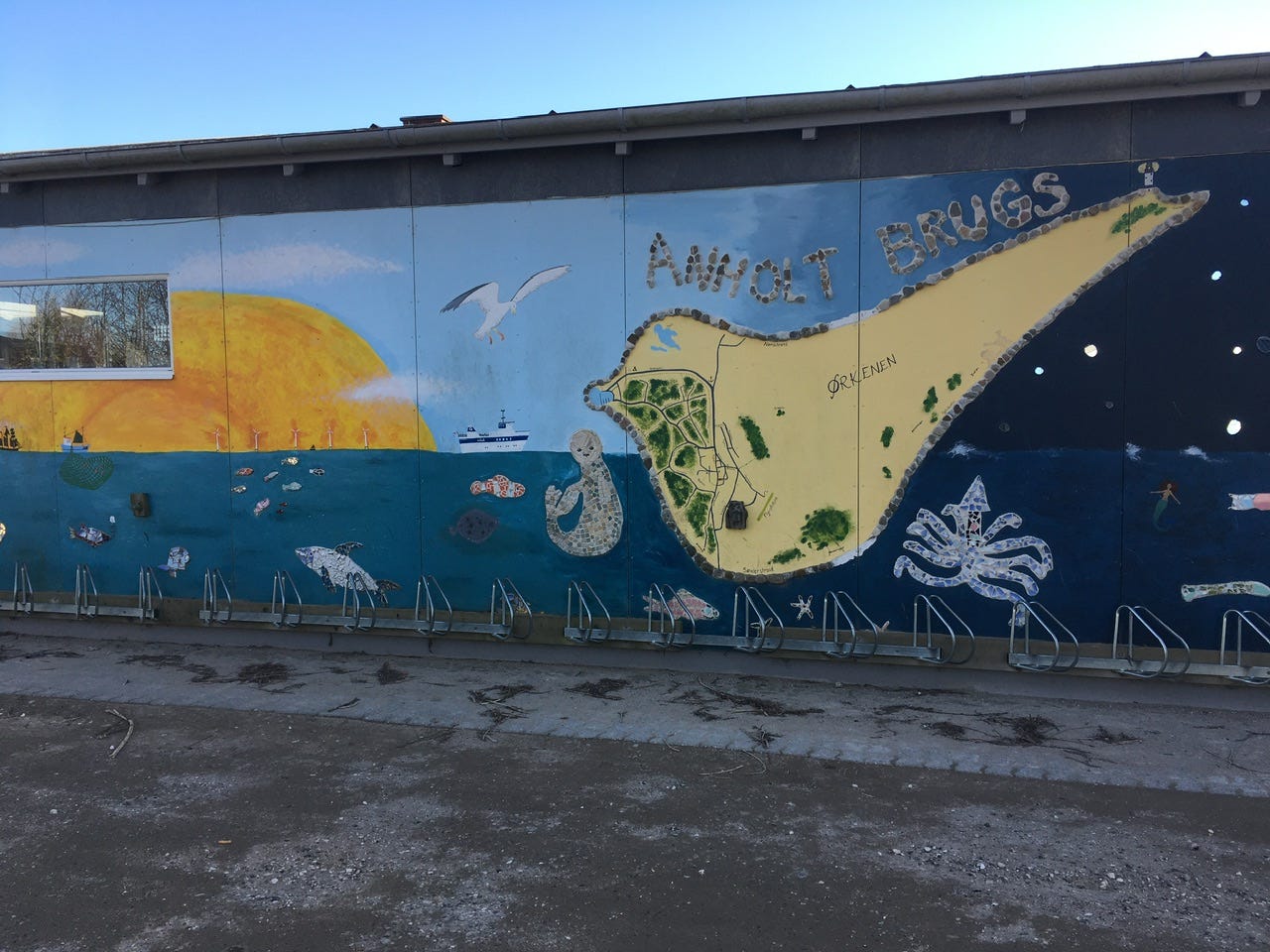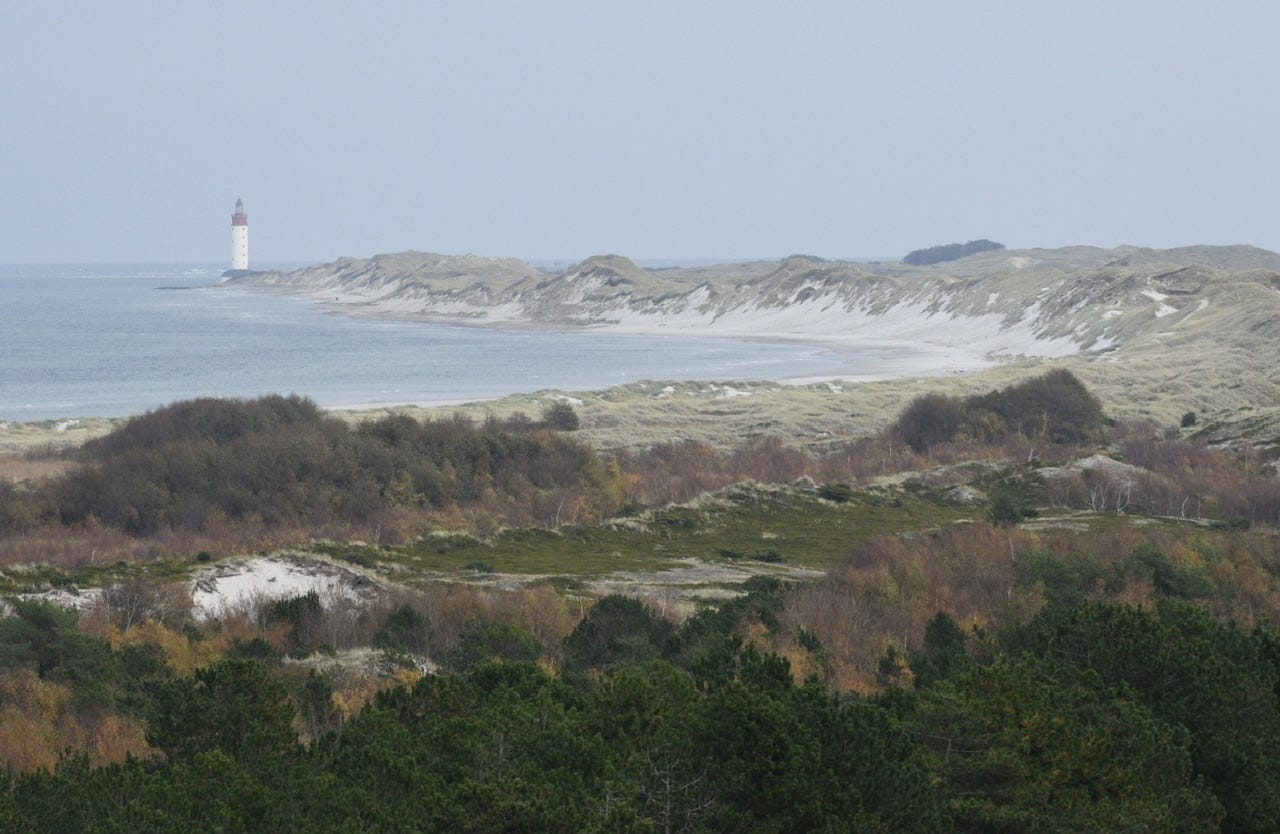This is the third installment of the Stars Without Cars series. On the surface, the series comprises a set of guides for would-be visitors to car-free and “car-lite” International Dark Sky Places (IDSPs). On a more abstract level, the examples constitute a “proof of possibility” that compact, active-transportation-friendly communities and dark-sky-friendly communities can exist as one and the same.
Anholt: Scandinavia’s Isolated Car-Lite Dark Sky Island
Situated in the Kattegat strait between Jutland and Sweden, Anholt is Denmark’s most isolated island as well as the nation’s newest IDSP. Almost 85 percent of the 22 km² island is protected as a Natura 2000 site, with no buildings, no roads, no human usext and no artificial lights at all. Anholt’s 130-ish permanent residents are clustered in the town of Anholt By in the west of the island, which has retrofitted its handful of streetlights to comply with DarkSky International’s guidelines.
Curiously, the vast protected area of the island, Ørkenen (The Desert), is valued as a treeless expanse of dunes and heathland, noted for its hundreds of species of lichens, even though the landscape is the result of deforestation and overexploitation. In fact, the first Danish-speaking settlers referred to what is now Ørkenen as Skoven (The Forest). As someone who was raised to decry deforestation, I find the conservation priorities for Anholt very odd indeed (despite my admitted fondness for lichen). But Europe’s conservation industry is what it is, and nocturnal visitors can look on the dark side: Anholt’s sprawling denuded and desertified landscape is a highly suitable setting for wandering under a starry sky – perhaps catching glimpses of shooting stars or even the northern lights (as I was once lucky enough to witness).
Unlike Sark and Spiekeroog, Anholt does not prohibit residents from having and driving cars on the island. (Indeed, I once witnessed an Anholt resident walking her dog from her car window.) But, again, there are only 130-ish permanent residents, including children, and many of them choose to walk or bike for most of their everyday transportation needs. Anholt thus maintains the benefits of quietness, safety and pedestrian/bicycle-friendliness found in car-free places.
Getting There
Some visitors sail their private ships to Anholt or even fly their private planes, but for us commoners, the only route is the three-hour ferry from Grenå, which sails once per day on four or five days per week (daily during high season).
To reach Grenå sans personal automobile, take the Letbane from Aarhus (the L1 line). Aarhus, in turn, can be easily reached by train from international airports in Aalborg or Copenhagen. One caveat: the Grenå Letbane station is more than a 3 km walk from the harbour, and while there are bus lines that connect the two destinations, they are slow-stopping indirect routes. I have often walked the distance on the footpath “Åstien” that runs alongside the Grenå River – a nice enough walk if you are not too burdened with luggage. Once I cheated and called a taxi.
Amenities
This is where anyone is bound to be sceptical: could an isolated island of 130-ish possibly have adequate amenities to make a self-catering stay pleasant? …if even possible? Well, perhaps I’m just easily satisfied, but my answer is a resounding ja.
The quality of food available on such a tiny island is rather impressive, especially during the high and shoulder seasons when visitors and residents have the option of a second supermarket, Købmanden ved Havnen (formerly Spar Konge). Whenever I have visited, I have been especially impressed with its selection of organic and plant-based items. The sole year-round grocery store, Brugsen Anholt, is also surprisingly well stocked. It is small, but the produce offerings change with the boats, and even during my winter visit I never felt short of fresh vegetables. Importantly, there is a decent selection of coffee, and an almost amusingly extensive range of wine and beer, in addition to multiple varieties of the island’s own award-winning Anholt Gin.
If you visit Anholt out of season, there might be no restaurants open at all, but there are a few very good establishments open during shoulder season (and even more during high season, or so I’ve heard). Dørken, the official bar of Anholt Gin, has a fabulous speakeasy-type atmosphere, illuminated by candles held by repurposed gin bottles. Beers from local brewery Anholt Bryghus are also often available on tap.
If it is safe to extrapolate from my experience with US-issued credit cards, then it is unlikely that you will experience difficulty using a foreign Visa or Mastercard at Anholt’s businesses. If you prefer cash, however, then make sure to withdraw your Dansk kroner before arriving, as there is no ATM on the island.
At the time of my last visit, a couple of nice open-air coffee stops remained open into the edge of shoulder season: Ricco’s by the harbour and the Bageri & Gartneri in town. Unsurprisingly, though, Anholt does not boast the kind of coffee shop designed to appeal to remote workers chilling with their laptops. Speaking of data and connectivity, I have not had difficulty finding holiday homes with perfectly adequate WiFi. However, for whatever reason, I tend to have little or no cellular service with my T-Mobile plan on the island, despite generally excellent experience with T-Mobile in Europe (other providers and plans may vary). If you are in the same boat, be aware that there are likely to be few options if the WiFi goes down at your sommerhus. I once resorted to accessing the ferry’s WiFi when the boat was docked at the harbour.
There is an island medical practice, Ø-lægen på Anholt, that accepts appointments from tourists. However, medical emergencies might require a helicopter airlift back to the mainland. (When I once visited a medical practice elsewhere in Denmark, I was told something like “This is Denmark,” when I asked the front desk about paying for my visit. I am not sure, however, if emergency airlifts are free to tourists, so risk-averse visitors are advised to take out appropriate travellers’ medical insurance.)
Accommodations
While I have little doubt that Anholt would be a fabulous place to live, finding a place to stay as a visitor is a bit more difficult. Most holiday homes are very large (and priced accordingly) and it can be difficult to find a home with modern facilities – such as, notably, indoor showers. There are hostels near the harbour with communal kitchen facilities, like Pakhuset and Casablanca, but if you are like me, you prefer the true experience of living as a hermit on a remote island – not subjecting yourself to the risk of interacting with fellow travellers every time you want a snack or a drink.
To my knowledge, there is no one comprehensive listing of the holiday homes for rent on Anholt. Novasol probably has the largest selection if you don’t mind searching in Danish and understand certain common practices for “sommerhus” rentals; for example, be sure to check whether you will need to pay an extra fee for electricity usage (most likely) and whether towels and linens can be rented if they are not included (as they seldom are). That said, I have actually had better luck at finding solo-traveller-friendly annexes on Airbnb.
Getting Around
Anholt is extremely safe and pleasant for walking or biking. Although residents are permitted to drive cars on the island, cyclists and pedestrians dominate the streets, even out of season. Tellingly, the Brugsen – the town’s only year-round shopping option – lacks its own car park but does offer a wall of dedicated bike parking. Although there are motorized commercial and utility vehicles, they tend not to present huge disruptions in an island of fewer than 130 permanent residents. Furthermore, while some islanders keep horses on the island for their own riding pleasure, horse-drawn buggies aren’t a tourist draw here, so there are many fewer poops on the roads of Anholt as compared to some other car-free islands, such as Sark.
A bike is highly useful on Anholt, especially if you are staying at a distance from the supermarket(s) or if you are visiting during high season or shoulder season, when you will most likely want to avail yourself of the amenities in both the town and the harbour. Bikes can be reserved from Anholt Cykeludlejning and picked up on arrival.
That said, if you are staying in town out-of-season, you might find it adequate to rely on foot, since the only place you will absolutely need to go is the Brugsen, and not much else will be open. Moreover, it is prohibited to ride bikes on the beaches or inside Ørkenen. There is no public transportation on Anholt, and no need for it.
Did you find this post useful or informative? Consider buying me a coffee on Ko-Fi. Any writing that I post here will always be free to the public without paywalls or paid subscriptions, but I appreciate any contributions; your voluntary support will help me keep at this.
Follow me on Bluesky.



